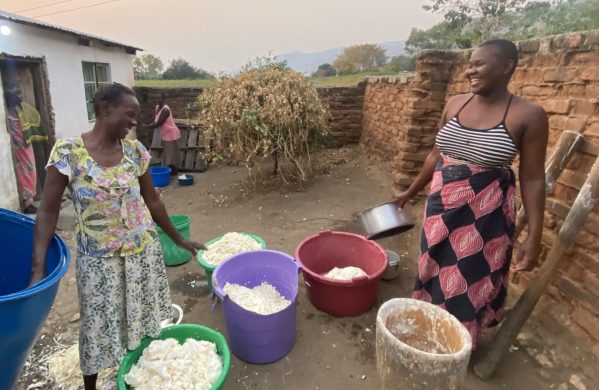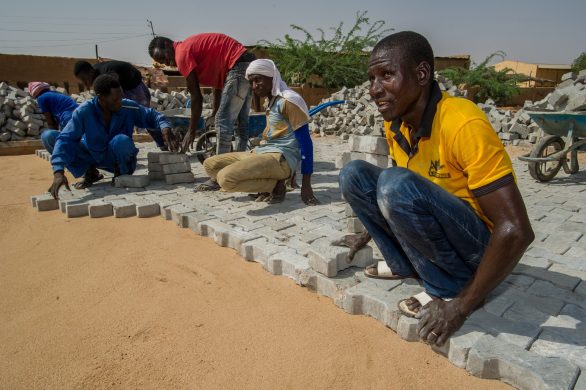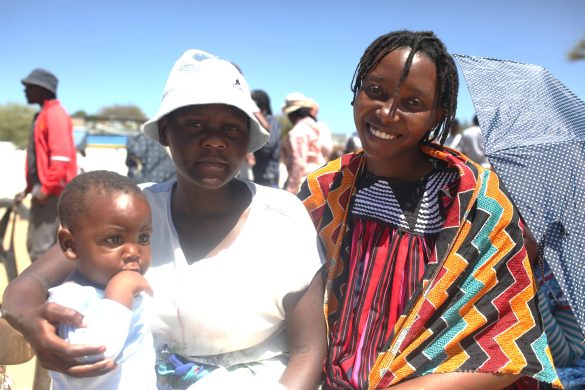Voldsomme klimaforandringer risikerer at ødelægge årtiers udvikling i Afrika, men relativt billige metoder for klimatilpasning kan forhindre dette scenarie, konkluderer FN’s Miljøprogram i ny rapport, der kan fungere som håndbog for effektiv afbødning af klimaforandringer.
NAIROBI, 12 August 2014 (UNEP): Investment in climate change adaptation can help ensure that the impacts of climate change – including a projected 20-50 per cent decline in water availability – do not reverse decades of development progress in Africa, according to a new report released Tuesday by United Nations Development Programme (UNEP).
Keeping Track of Adaptation Actions in Africa (KTAA) – Targeted Fiscal Stimulus Actions Making a Difference – is the first graphical report that presents practical examples of successful low-cost adaptation solutions from around sub-Saharan Africa in one concise handbook.
The report includes examples of successful adaptation projects that have provided the impetus for large-scale government investments and policy action.
According to the report, by 2050 Africa’s population will have doubled. The continent will then be home to 2 billion people, the majority of which will still largely depend on agriculture for their livelihoods.
“With 94 per cent of agriculture dependent on rainfall, the future impacts of climate change – including increased droughts, flooding, and seal-level rise – may reduce crop yields in some parts of Africa by 15 – 20 per cent,” said UN Under-Secretary-General and UNEP Executive Director Achim Steiner.
“Such a scenario, if unaddressed, could have grave implications for Africa’s most vulnerable states.”
“Using projects implemented in various countries in sub-Saharan Africa, the KTAA report clearly demonstrates how investment in adaptation actions can provide, not just low-cost solutions to climate change challenges, but can actually stimulate local economies through more efficient use of natural capital, job creation and increased household incomes.”
“By integrating climate change adaptation strategies in national development policies governments can provide transitional pathways to green growth and protect and improve the livelihoods of hundreds of millions of Africans,” he added.
The practical publication responds to the 2013 Africa Adaptation Gap Report which was endorsed by the African Ministerial Conference on the Environment (AMCEN), and which identified the potentially crippling costs of climate change for Africa.
“Incipient threats posed by climate change, particularly in terms of potentially overturning decades of development efforts in Africa, suggest that future development efforts should incorporate greater resilience to climate change impacts,” said President of AMCEN and Minister of State for the Environment, United Republic of Tanzania, Hon. Dr. Binilith Mahenge.
“The KTAA report is an action guide that showcases ways to do this in various sectors and African countries should use this as the guiding document for investments in adaptation to climate change.”
The first part of the report provides snapshots of the current and predicted future impacts of climate change on livelihoods, agriculture, and human and ecosystem health in Africa, detailing impacts by region, country and even city.
The second half of the report describes how countries through low-cost climate adaptation actions can improve the health and functioning of ecosystems; build community capacity to sustainably manage ecosystems; improve agricultural productivity; and innovatively store water.
For example, an aquatic ecosystems project in one local community in Togo led to an increase in access to water for human use, agriculture and livestock of 488 per cent.
Læs mere i nedenstående link.














